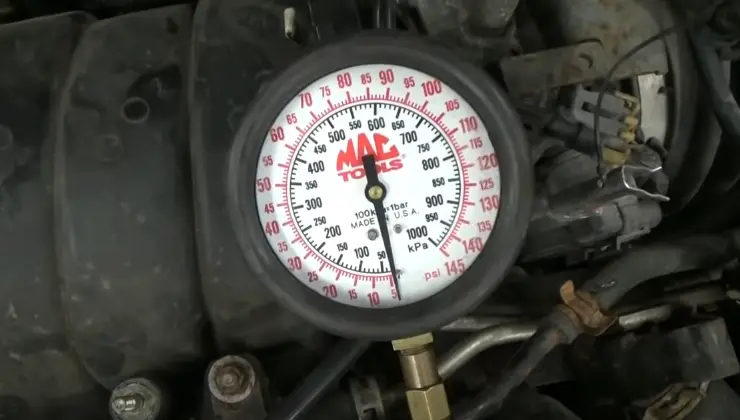If you’re someone who has experienced losing fuel pressure after leaving your car parked for a while, you’re not alone. It’s a common issue that affects many car owners, and it can be frustrating to deal with. But why does it happen, and what can you do about it?
In this article, we’ll explore the causes of losing fuel pressure after sitting and offer some solutions to help you get your car back on the road. Whether you’re a seasoned mechanic or a newbie, this guide will provide you with the information you need to diagnose and fix the problem.
What is fuel pressure, and why is it important?
Fuel pressure refers to the amount of pressure that fuel is under as it flows from the fuel tank to the engine. A fuel pump is responsible for maintaining the proper fuel pressure, and if it fails, it can lead to various problems, including stalling, hard starting, and, of course, losing fuel pressure after sitting.
Causes of losing fuel pressure after sitting
We find out some causes of losing fuel pressure. These are –
Leaking Fuel Injectors
One of the most common causes of losing fuel pressure after sitting is leaking fuel injectors. When fuel injectors leak, they allow fuel to seep out, which can lead to a drop in fuel pressure. This can cause hard starting, poor performance, and other issues.
Faulty Fuel Pump
The fuel pump is responsible for maintaining fuel pressure, and if it’s not working correctly, you can experience a drop in fuel pressure after sitting. This is especially true if the fuel pump is old or worn out.
Clogged Fuel Filter
A clogged fuel filter can also cause a drop in fuel pressure. When the fuel filter is clogged, it restricts the flow of fuel, which can cause the fuel pressure to drop.
Vapor Lock
Vapor lock occurs when the fuel in the fuel lines or fuel rail gets too hot and turns into vapor. This can cause a drop in fuel pressure and can make it difficult to start the engine.
Bad Fuel Pressure Regulator
The fuel pressure regulator is responsible for regulating the amount of fuel that is delivered to the engine. If it’s not working correctly, it can cause a drop in fuel pressure.
Solutions to losing fuel pressure after sitting
Here are some solutions to solve the issues –
Replace Leaking Fuel Injectors: If you suspect that leaking fuel injectors are causing the drop in fuel pressure, you’ll need to replace them. This is a job that’s best left to a professional mechanic, as it requires specialized tools and knowledge.
Replace the Fuel Pump: If the fuel pump is faulty, you’ll need to replace it. Again, this is a job that’s best left to a professional mechanic, as it requires specialized tools and knowledge.
Replace the Fuel Filter: If the fuel filter is clogged, you can replace it yourself. It’s a relatively easy job that requires only a few basic tools. However, if you’re not comfortable working on your car, it’s best to leave it to a professional.
Avoid Vapor Lock: To avoid vapor lock, you can try to park your car in a shaded area or use a sunshade. You can also install a heat shield to protect the fuel lines and fuel rail from excessive heat.
Replace the Fuel Pressure Regulator: If the fuel pressure regulator is bad, you’ll need to replace it. This is a job that’s best left to a professional mechanic, as it requires specialized tools and knowledge.
Frequently Asked Questions
Q: How long can a car sit without losing fuel pressure?
A: Generally, a car can sit for up to three months without losing fuel pressure. However, this can vary depending on the make and model of the car and the condition of the fuel system.
Q: Can I drive with low fuel pressure?
A: It’s not recommended to drive with low fuel pressure, as it can cause damage to the engine and other components.
Q: How much does it cost to replace a fuel pump?
A: The cost of replacing a fuel pump can vary depending on the make and model of the car and the mechanic’s hourly rate. Generally, it can cost anywhere from $500 to $1000.
Q: Can I clean a clogged fuel filter instead of replacing it?
A: No, a clogged fuel filter cannot be cleaned. It needs to be replaced with a new one.
Q: How often should I replace the fuel filter?
A: The fuel filter should be replaced every 20,000 to 30,000 miles or as recommended by the manufacturer.
Conclusion
If you find the causes of losing fuel pressure after sitting and follow our solutions, you can will be able to fix the problem and get your car back on the road. Remember to perform regular maintenance on your car’s fuel system to prevent problems from occurring in the first place. If you’re not comfortable working on your car, don’t hesitate to seek the help of a professional mechanic. By taking care of your car’s fuel system, you can ensure that it runs smoothly and reliably for years to come.
